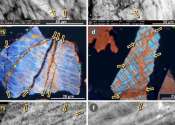New study reveals comet airburst evidence from 12,800 years ago
Researchers continue to expand the case for the Younger Dryas Impact hypothesis. The idea proposes that a fragmented comet smashed into the Earth's atmosphere 12,800 years ago, causing a widespread climatic shift that, among ...









